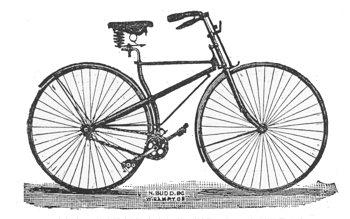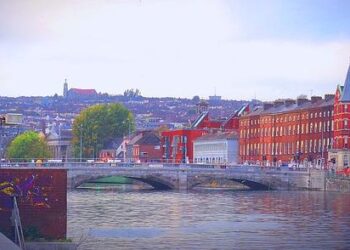The bicycle has long been woven into the fabric of Ireland’s history, serving as a symbol of mobility, independence, and social change. In a new article for The Guardian, journalist Cian Ginty explores how this humble mode of transport, once crucial to everyday life, is now emerging as a cornerstone of Ireland’s sustainable future. As cities and rural communities alike face growing challenges related to climate change, urban congestion, and public health, the revival of cycling represents both a nod to the past and a vital step forward. This piece delves into the cultural and environmental significance of the bicycle in Ireland, highlighting its enduring impact and potential to reshape the nation’s transport landscape.
The Historical Impact of Bicycles on Irish Society and Culture
Throughout the 19th and early 20th centuries, bicycles became a powerful symbol of freedom and progress in Ireland. Their affordability and accessibility transformed the mobility of the working and middle classes, offering a new mode of transportation that was both efficient and empowering. Rural communities, previously isolated by poor infrastructure, found a new rhythm of life as bicycles connected villages and towns, fostering economic activity and social interaction. Moreover, bicycles played a subtle yet significant role in advancing gender equality, providing women with unprecedented independence and challenging traditional societal norms.
The cultural imprint of the bicycle endures in several key areas:
- Sport and Recreation: Cycling clubs emerged as social hubs, nurturing a spirit of camaraderie and competition that persists today.
- Political Movements: Bicycles were instrumental in disseminating ideas and mobilizing communities during Ireland’s struggle for independence.
- Urban Development: The early adoption of bicycles prompted changes in road infrastructure that laid foundations for modern transport planning.
| Period | Impact | Legacy |
|---|---|---|
| 1880s-1900s | Mass adoption by working class | Enhanced rural connectivity |
| 1910s-1920s | Support for nationalist movements | Symbol of independence |
| 1930s-1950s | Recreational cycling gains popularity | Growth of cycling clubs |
How Cycling is Driving Ireland’s Green Transportation Revolution
Ireland’s commitment to reducing carbon emissions has found a powerful ally in the humble bicycle. With urban centers expanding rapidly, cycling infrastructure has been prioritized like never before, transforming cityscapes across Dublin, Cork, and Galway. Public funding has surged towards creating dedicated bike lanes, secure parking, and bike-sharing schemes, making cycling not only a viable option but often the quickest way to navigate congested streets. This grassroots shift is supported by a growing cultural embrace of active travel, reflecting a nationwide push for sustainability that champions health, accessibility, and economic benefits.
The environmental impact is measurable: recent statistics highlight a 20% decrease in urban car journeys replaced by bike rides in major Irish cities. Below is a snapshot of how cycling figures into Ireland’s broader green transport strategy:
| Category | 2015 | 2023 | Change |
|---|---|---|---|
| Commuters using bicycles (%) | 6.5 | 13.2 | +103% |
| Public bike-share memberships | 12,000 | 45,000 | +275% |
| Kilometers of bike lanes | 175 km | 430 km | +146% |
| CO2 reduction from cycling (tons) | – | 4,800 | New metric |
The government’s Climate Action Plan explicitly sets ambitious targets for cycling uptake, complemented by initiatives encouraging employers to support staff commuting by bike through incentives such as tax breaks and secure facilities. Meanwhile, community-led efforts creatively harness social momentum-bike festivals, repair workshops, and local advocacy groups foster a vibrant cycling culture. These initiatives are helping to replace Ireland’s car-dependent past with a greener, healthier, and more connected future on two wheels.
Policy Changes Needed to Support Cycling Infrastructure and Promote Urban Mobility
To realize the full potential of cycling as a cornerstone of urban mobility, bold policy reforms are imperative. Governments must prioritize the creation of continuous, safe cycling networks integrated seamlessly with public transport, eliminating barriers that discourage everyday cyclists. Investment in dedicated bike lanes, secure parking facilities, and improved lighting will not only enhance safety but also foster inclusivity, encouraging more diverse groups to take up cycling. Crucially, policies need to extend beyond infrastructure by embedding cycling into broader urban planning and climate action strategies, ensuring long-term commitment and funding.
Legislative frameworks can empower local authorities to enforce traffic calming measures and reduce car dependency in city centres. Financial incentives such as tax breaks for bike purchases, subsidies for workplace cycling schemes, and congestion charges for private vehicles can shift commuter behaviour dramatically. The following table highlights key policy measures and their expected impacts:
| Policy Measure | Expected Impact |
|---|---|
| Protected Bike Lanes | Increase cyclist safety by 50% |
| Tax Incentives for Cyclists | Boost bike ownership by 30% |
| Car-Free Zones in City Centres | Reduce traffic congestion by 40% |
| Integration with Public Transport | Expand commuter options and accessibility |
Such comprehensive and well-funded policy changes are essential to shift cycling from a niche activity to a mainstream mode of urban transportation. Ireland’s cycling renaissance demands an official framework that champions sustainable travel, promotes public health, and supports economic growth through reduced infrastructure costs and fewer traffic delays.
In Conclusion
As Ireland continues to grapple with the challenges of urban congestion and environmental sustainability, the bicycle emerges not only as a symbol of the nation’s rich cultural heritage but as a practical solution for its future. From the lanes of Dublin to the countryside’s winding roads, cycling is set to play a pivotal role in shaping a greener, healthier Ireland. Policymakers and communities alike face the task of investing wisely in infrastructure and embracing the bike’s potential to transform the country’s transportation landscape. The story of Ireland and its bicycles is far from over-it is accelerating into a new chapter.
















